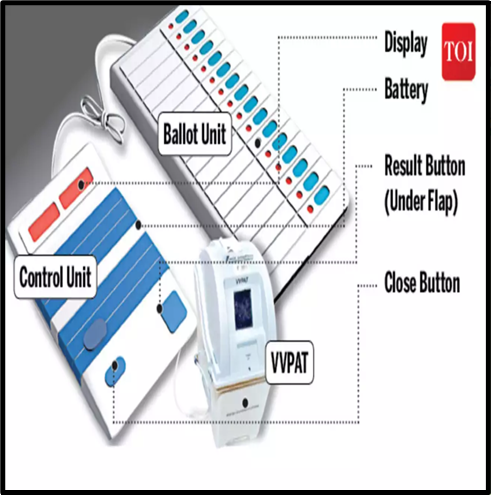SC CLARIFIES: EVM CONTROL UNITS IMPARTIAL, DON’T IDENTIFY PARTIES.
Why in the news?
The Supreme Court addresses EVM transparency concerns, emphasises microcontrollers’ impartiality, and queries Election Commission on machine functioning and security.
source:toi
Understanding Supreme Court Observations:
- The Supreme Court referred to microcontrollers in EVMs as “agnostic”, stating they do not recognize political parties or candidates, only the buttons pressed by voters.
- Justice Sanjiv Khanna emphasised that the buttons on ballot units are interchangeable, programmed at the manufacturer stage without knowledge of which party will be assigned which button.
- The case addressed concerns about EVM transparency and vulnerability to rigging, with the court emphasising the non-disclosure of EVM source code to prevent misuse and protect integrity.
What is an Electronic Voting Machine?
Features:
|





